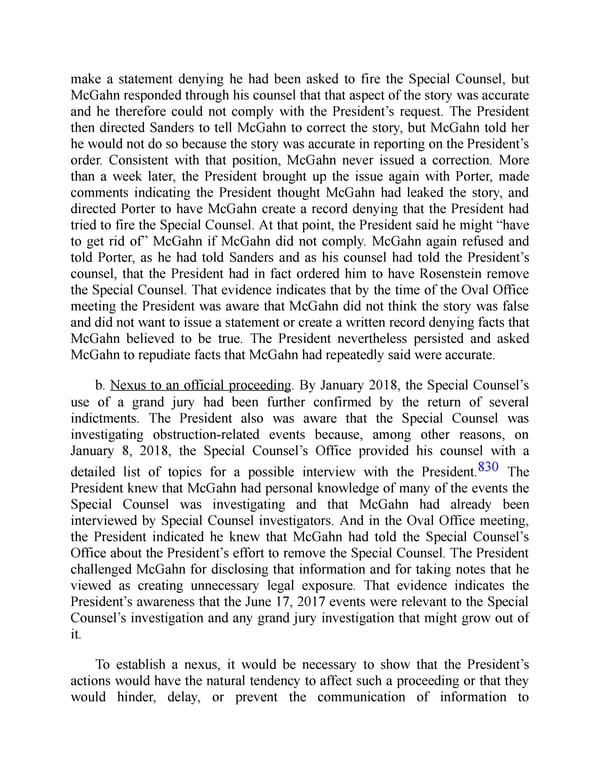make a statement denying he had been asked to fire the Special Counsel, but McGahn responded through his counsel that that aspect of the story was accurate and he therefore could not comply with the President’s request. The President then directed Sanders to tell McGahn to correct the story, but McGahn told her he would not do so because the story was accurate in reporting on the President’s order. Consistent with that position, McGahn never issued a correction. More than a week later, the President brought up the issue again with Porter, made comments indicating the President thought McGahn had leaked the story, and directed Porter to have McGahn create a record denying that the President had tried to fire the Special Counsel. At that point, the President said he might “have to get rid of” McGahn if McGahn did not comply. McGahn again refused and told Porter, as he had told Sanders and as his counsel had told the President’s counsel, that the President had in fact ordered him to have Rosenstein remove the Special Counsel. That evidence indicates that by the time of the Oval Office meeting the President was aware that McGahn did not think the story was false and did not want to issue a statement or create a written record denying facts that McGahn believed to be true. The President nevertheless persisted and asked McGahn to repudiate facts that McGahn had repeatedly said were accurate. b. Nexus to an official proceeding. By January 2018, the Special Counsel’s use of a grand jury had been further confirmed by the return of several indictments. The President also was aware that the Special Counsel was investigating obstruction-related events because, among other reasons, on January 8, 2018, the Special Counsel’s Office provided his counsel with a 830 detailed list of topics for a possible interview with the President. The President knew that McGahn had personal knowledge of many of the events the Special Counsel was investigating and that McGahn had already been interviewed by Special Counsel investigators. And in the Oval Office meeting, the President indicated he knew that McGahn had told the Special Counsel’s Office about the President’s effort to remove the Special Counsel. The President challenged McGahn for disclosing that information and for taking notes that he viewed as creating unnecessary legal exposure. That evidence indicates the President’s awareness that the June 17, 2017 events were relevant to the Special Counsel’s investigation and any grand jury investigation that might grow out of it. To establish a nexus, it would be necessary to show that the President’s actions would have the natural tendency to affect such a proceeding or that they would hinder, delay, or prevent the communication of information to
 Mueller Report PDF Page 384 Page 386
Mueller Report PDF Page 384 Page 386